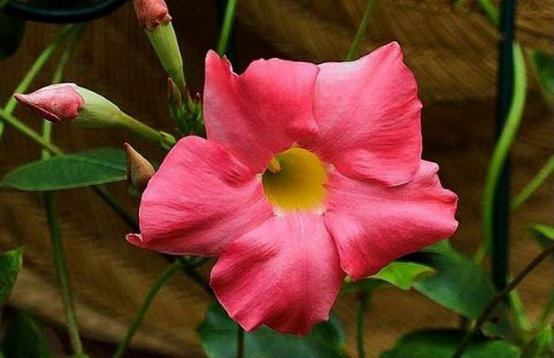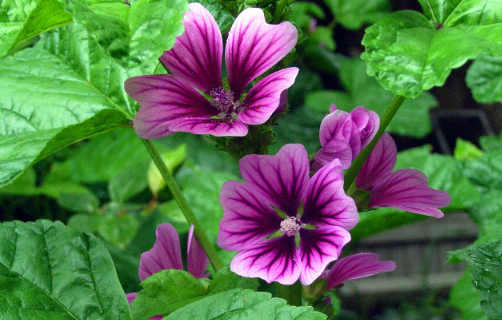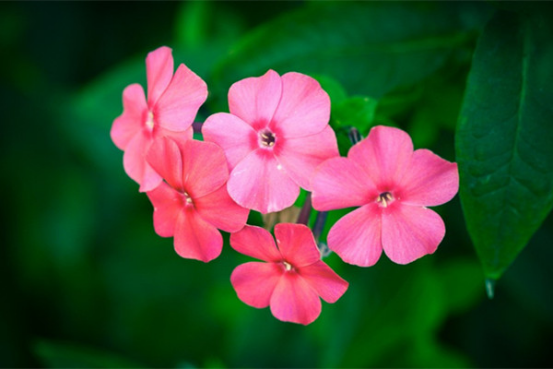Propagation of Tripterygium wilfordii
The most suitable growth temperature of Tripterygium wilfordii is 20-31 ℃, and it is the most suitable for cultivation in spring, which should not be lower than 10 ℃ to avoid freezing injury. Tripterygium wilfordii has a strong ability to adapt to the soil, especially like the sandy soil rich in humus. Generally use sowing, cutting propagation, select semi-lignified branches, an Internode used as a cuttings. Its cuttings take root for a long time, and it can be placed in a sunny place as far as possible, or an appropriate amount of rooting powder can be used to accelerate its rooting.

After knowing so much, do you want to cultivate a beautiful fragrant vine by hand? it is not only fragrant at home, but also has great ornamental value, remember not to miss its flowering period!
Introduction to the propagation method of Tripterygium wilfordii
The flowers of Piaoxiang vine are colorful and the plant type is very beautiful, so it has the good name of "queen of tropical vine". Because the trailing nature of Piaoxiang vine is not strong, it can also be cultivated indoors. Some flower friends will plant a few fragrant vines on the balcony or courtyard, which can add some exoticism to the environment.
Fragrant vine
Tripterygium wilfordii is generally propagated by cutting, which can be carried out in spring, summer and autumn, and can also be propagated rapidly by tissue culture. The fragrant vine prefers a warm, humid and sunny environment, but it can also be placed in a slightly shaded place, but the flowering is reduced if the light is not enough. The suitable temperature for growth is 20 ℃ and 30 min, which has strong adaptability to soil, but the sandy loam rich in humus and well drained is the best.
Outdoor cultivation should not be planted in too low-lying places, so as not to cause hypoxia and poor growth caused by stagnant water. Indoor pot cultivation in the north can use rotten leaf soil with a small amount of coarse sand, the south can use pond mud, peat soil, river sand mixed at 5:3:2. During the growing period, an appropriate amount of compound fertilizer 3Mel can be applied for 5 times, but the amount of nitrogen fertilizer should be controlled to avoid excessive vegetative growth and affect reproductive growth and reduce flowering. In the process of maintenance, watering should be properly controlled to form a developed root system.
Can be pruned after flowering, if it is an annual or biennial plant, can be light pruning, pruning is mainly for plastic surgery. Old perennial plants can be forcefully cut in spring to promote the germination of strong new branches.
Introduction of Dipladenia sanderi fragrant rattan (scientific name: Dipladenia sanderi) is a new type of vine, also known as red wrinkled rattan, double glandular rattan, double Xi rattan, Wen rattan, red cicada flower, native to tropical America, is a perennial evergreen plant of the family Apocynaceae. The winding stem of the fragrant vine is soft and flexible, spiraling up along the bracket, the pink trumpet-like flowers are large and straight, and the stem can reach 6 to 8 centimeters. Fragrant vines bloom continuously from early spring to late autumn, with pink, pink, bright red and so on, and are rich in variety, known as "queen of tropical lianas". Piaoxiang likes a warm and humid environment, but its branching is not good. Fragrant vines in the flowering period, often show more flowers than leaves of the grand occasion, the breeze hit, bursts of fragrance makes people relaxed and happy, so there is a "fragrant vine" elegant name. The morphological characteristics of Tripterygium wilfordii is a perennial evergreen vine of Apocynaceae. Leaves opposite, entire, long ovoid, apex acute, leathery, foliage wrinkled, dark green and glossy. Flowers axillary, Corolla funnel-shaped, flowers for red, pink, pink and other colors, flowering mainly for summer and autumn, such as proper maintenance can also bloom in other seasons. The ecological habits of fragrant vines like warm, humid and sunny environments, and they can also be placed in slightly shaded places, but their blossoms are reduced if the light is not enough. The suitable temperature for growth is 20 ℃ and 30 min, which has strong adaptability to soil, but the sandy loam rich in humus and well drained is the best. The garden use of the fragrant vine is known as the queen of tropical lianas because of its colorful flowers and beautiful plant shape. Outdoor cultivation, can be used for fence, scaffolding, rooftop, small courtyard beautification. Because of its trailing nature is not strong, but also suitable for indoor potted plants, can be placed on the balcony to make a spherical and hanging basin to watch. Cultivate several fragrant vines to make the courtyard and balcony full of exoticism. The cultivation techniques of Tripterygium wilfordii are generally propagated by cutting, which can be carried out in spring, summer and autumn, and can also be propagated rapidly by tissue culture. The fragrant vine prefers a warm, humid and sunny environment, but it can also be placed in a slightly shaded place, but the flowering is reduced if the light is not enough. The suitable temperature for growth is 20 ℃ and 30 min, which has strong adaptability to soil, but the sandy loam rich in humus and well drained is the best. Outdoor cultivation should not be planted in too low-lying places, so as not to cause hypoxia and poor growth caused by stagnant water. Indoor pot cultivation in the north can use rotten leaf soil with a small amount of coarse sand, the south can use pond mud, peat soil, river sand mixed at 5:3:2. During the growing period, an appropriate amount of compound fertilizer 3Mel can be applied for 5 times, but the amount of nitrogen fertilizer should be controlled to avoid excessive vegetative growth and affect reproductive growth and reduce flowering. In the process of maintenance, watering should be properly controlled to form a developed root system. Can be pruned after flowering, if it is an annual or biennial plant, can be light pruning, pruning is mainly for plastic surgery. Old perennial plants can be forcefully cut in spring to promote the germination of strong new branches. The disease control of Tripterygium wilfordii has strong stress resistance and less infection, so during the growing period, spraying fungicide once a month can prevent the disease. Pictures of fragrant vines
- Prev

Matters needing attention in marshmallow culture
Pruning in the growth process of mallow requires frequent pruning, cutting off withered, diseased and weak branches, dense branches and residual flowers, so as to facilitate ventilation and light transmission, and promote multi-branching and flowering of mallow.
- Next

Culture of Tripterygium repens
1. The flowering period of Piaoxiang vine is mainly in summer and autumn. If you maintain it properly, it can blossom in other seasons. 2. Light fragrant vines prefer warm, humid and sunny environments, and can also be placed in slightly shaded places, but the lack of light reduces flowering. The optimum temperature for growth is 20-30 ℃.
Related
- Fuxing push coffee new agricultural production and marketing class: lack of small-scale processing plants
- Jujube rice field leisure farm deep ploughing Yilan for five years to create a space for organic food and play
- Nongyu Farm-A trial of organic papaya for brave women with advanced technology
- Four points for attention in the prevention and control of diseases and insect pests of edible fungi
- How to add nutrient solution to Edible Fungi
- Is there any good way to control edible fungus mites?
- Open Inoculation Technology of Edible Fungi
- Is there any clever way to use fertilizer for edible fungus in winter?
- What agents are used to kill the pathogens of edible fungi in the mushroom shed?
- Rapid drying of Edible Fungi

